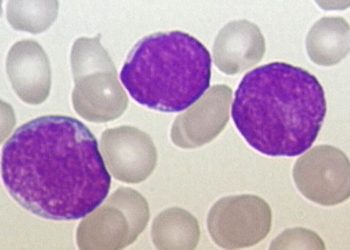Multisystem inflammatory syndrome in SARS-CoV-2 infected children has poor outcomes
1. In this case series, SARS-CoV-2 infection in children leading to multisystem inflammatory syndrome often required intensive care.
2. Of those who required intensive care, many required vasoactive support and inflammatory biomarkers were elevated in almost all patients.
Evidence Rating Level: 3 (Average)
Study Rundown: Coronavirus disease 2019 (COVID-19) has strained the healthcare systems across the entire world and relatively sparse data in children has challenged clinicians on the clinical care for the pediatric population. Based on previous data, a syndrome of hyperinflammation, shock and fever have been reported in children termed multisystem inflammatory syndrome in children (MIS-C). This case series aimed to characterize the clinical course of this syndrome in patients with COVID-19. The majority of patients had involvement of at least four organ systems including gastrointestinal, cardiovascular, hematologic, mucocutaneous and respiratory systems. Most were cared for in an ICU, with 20% receiving mechanical ventilation, 4% receiving extracorporeal membrane oxygenation support and 2% passing away. 40% of patients had Kawasaki’s disease-like features. Most patients had four or more biomarkers indicative of inflammation. Treatment with immunomodulators was common including intravenous immune globulin (IVIG), glucocorticoids and interleukin-6 inhibitors. The study is one of the first studies to report on the clinical course of MIS-C. However, there were limitations from this study such as the lack of a comparison which prevents inference of risk factors for MIS-C, the limited generalizability of the study and the inability of study to determine the time of onset of SAR-CoV-2 infection and development of MIS-C. More studies are needed to ascertain more key details on MIS-C.
Click here to read the study in the NEJM
Relevant Reading: Clinical Characteristics of 58 Children With a Pediatric Inflammatory Multisystem Syndrome Temporally Associated With SARS-CoV-2
In-Depth [case-control series]: This was a retrospective, case-control series with 186 patients identified with MIS-C in pediatric health centers across the United States. The case definition included six criteria: serious disease requiring hospitalization, age < 21 years old, fever for at least 24 hours, laboratory evidence of inflammation, multiorgan system involvement and evidence of infection of SAR-CoV-2. Organ systems involved included gastrointestinal (90%), cardiovascular (80%), hematological (76%), mucocutaneous (74%), and respiratory (70%). The median time of hospitalization was 7%, where 80% of patients needed ICU care, 20% were on mechanical ventilation, 80% required vasoactive agents, and 2% died. 40% of patients had documented Kawasaki’s disease features with 8% found to have coronary artery aneurysms. Most patients (92%), had elevations in at least four inflammatory markers including: ESR, CRP, lymphocytopenia, neutrophilia, thrombocytopenia, ferritin, hypoalbuminemia, ALT, anemia, d-dimer, INR, and fibrinogen. The use of immunomodulators was common which included IVIG (77%), glucocorticoids (49%) and interleukin-6 inhibitors (20%). The findings of this study highlight the serious to life threatening effects of multisystem inflammatory syndrome among SARS-CoV-2 positive children in children who were previously healthy.
Image: PD
©2020 2 Minute Medicine, Inc. All rights reserved. No works may be reproduced without expressed written consent from 2 Minute Medicine, Inc. Inquire about licensing here. No article should be construed as medical advice and is not intended as such by the authors or by 2 Minute Medicine, Inc.






